Pre-Production Review: Toyota Prius V

Once upon a time Japanese cars came to our shores promising high fuel economy and despite feeling small and cheap, buyers flocked to the dealers. Over time however, the Japanese auto industry grew up. “Small and flimsy” are qualities that modern Japanese imports do not possess but as is the way with the world, better quality came with a price: lower fuel economy. The first generation Prius proved that good fuel economy did not mean jamming yourself into a two-seater light-weight vehicle full of compromises a family of four just couldn’t make. Still, it was far from perfect; it was dreadfully boring, felt small and cheap and was not large enough for many families.
In an era when ginormous SUVs were all the rage, the Prius’ mileage was nothing short of show-stopping and they sold like hotcakes once the Hollywood set made them the latest fashion accessory. When the third generation Prius saw the light of the automotive press, it was obvious that the upstart had grown up. Unlike the other Toyota family members however, the Prius becomes more efficient and larger with every revision. One complaint however has stuck: the Prius is just too small for some.
To show us how versatile Toyota’s Prius platform can be, Toyota invited us to the press preview of the Prius V (pronounced “vee” not five). The shape is familiar to anyone overseas as the V is known as the Prius Alpha in Japan and the Prius + in Europe. What is the V? It’s basically a Prius Wagon, but Toyota would prefer we just called it the largest and most versatile Prius on the market. It’s not a crossover because it retains its car-like ride height and FWD based hybrid drivetrain.
The biggest change from the Prius Alpha that has been exciting the green bloggers for a few months is the lack of a third row seat in the American Prius V. Toyota tells us that less than 5% of RAV4 buyers choose the third row option citing their research that buyers interested in a third row opt for the Highlander. Still, this seems like fuzzy logic to me since a buyer that is seriously interested in a 40+ MPG hybrid wagon is really going to be happy stepping up to a large SUV. Prius shoppers have always marched to a different drummer and may just be happy with jamming two extra passengers in the cramped back seat to save some MPGs. The real issue is a lithium-ion battery pack is required to make the 3rd row possible, and in the Prius +/Alpha, Toyota stashed a portion of this battery in the center console making the overseas models a little shy on storage space. Toyota claims that the EPA rating of the lithium-ion Prius would not have been any higher than the NiMH version either making it just more expensive in a market that just wants to jumbo-size their Prius combo for 99-cents.
Our brief encounter with the V started on an unusually sunny Monterey afternoon. We were paired up and sent off on a 98-mile road course, and like good children we shared the wheel-time. Toyota graciously allowed me an additional 40 miles of solo time to explore the car and a brief photo shoot.
Inside the V, the Prius family resemblance is obvious with many of the parts lifted right out of the liftback. Rather than just inflating the sheet metal and calling it done, Toyota chose to introduce a new three-color instrument cluster that is far more readable than the one in the liftback and some new soft-touch panels on the dash. Fit and finish was adequate, but as we were driving a pro-production vehicle I expect the final product to have these wrinkles ironed out.
The rear seats in the V are the biggest difference compared to the liftback, providing about three-inches more leg room along with seats that recline up to 45-degrees and can be moved forward/aft. The increased dimensions mean that it is possible to comfortable fit two rearward facing child seats in the rear with normal-sized parents up front. In addition to kid-friendly rear seats the V delivers more cargo room than 80% of small SUV/CUVs on the market in the US including the Escape Hybrid, Equinox, and Jetta TDI wagon. Even the payload capacity seems beefy at 1,056lbs. Just keep in mind that you still have to motivate that additional ½ ton of weight with the same 134HP as the regular Prius.
During our short stint in the V, we averaged 40.1 MPG in mixed driving which jives with the newly announced EPA estimated numbers of 44/40/42 (City/Highway/Combined) compared to the liftback’s numbers of 51/48/50, this is a 16% reduction for a 60% increase in usable cargo space and decent improvement in passenger space. The difference in fuel economy is largely due to the V’s larger profile, longer wheelbase, additional weight (230lbs) and less aerodynamic profile.
Pricing has not yet been announced, but we expect it to ring in around $26,000 base price based on Toyota’s statements that the V will command a price premium over the liftback. Toyota only expects to sell some 25,000 examples in the USA, but I suspect the take rate could be higher. Be sure to check back with TheTruthAboutCars.com for a full review including comparisons when the production model becomes available. In the meantime, if you have any review suggestions, post in our comment section or on our Facebook page and let us know.
Toyota provided the pre-production Prius V, one night’s stay at a swanky hotel in Monterey and the $10 admission fee to the “17-mile drive.”

More by Alex L. Dykes
Latest Car Reviews
Read moreLatest Product Reviews
Read moreRecent Comments
- Analoggrotto so what
- Shipwright I wonder where Speedmaster is based. Oh Looky! it's China! who would have thought.
- Mike Wasnt even a 60/40 vote. Thats really i teresting.....
- SCE to AUX "discounts don’t usually come without terms attached"[list][*]How about: "discounts usually have terms attached"?[/*][/list]"Any configurations not listed in that list are not eligible for discounts"[list][*]How about "the list contains the only eligible configurations"?[/*][/list]Interesting conquest list - smart move.
- 1995 SC Milking this story, arent you?



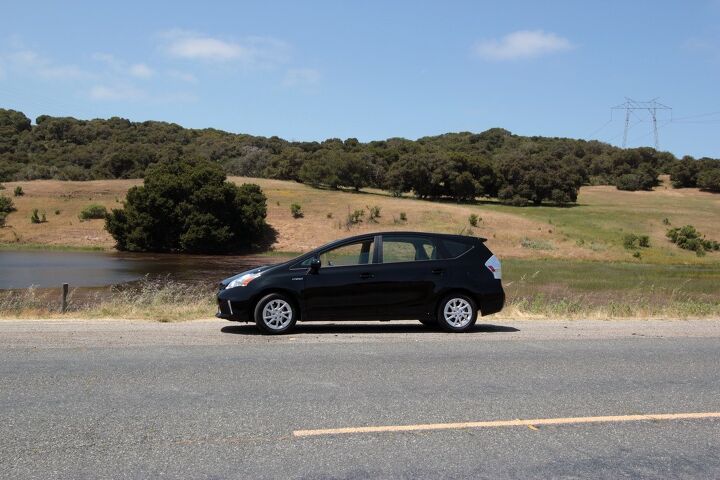

































































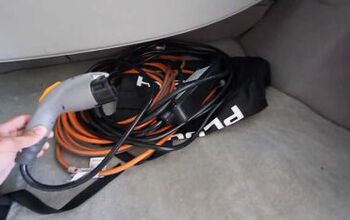

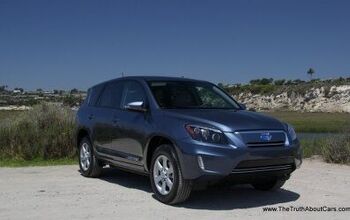
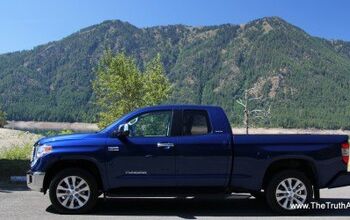
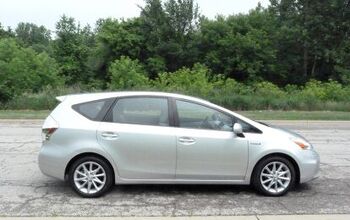










Comments
Join the conversation
Other than the crashiness of the suspension over potholes, the Prius is one heck of an (sub)urban hauler for anyone less than concerned about maximizing speed and throughput at every opportunity, which seems to be at least 98% of people on the road. This bigger one ought to really light up American buyers.
It's good to see the Prius V has some pick-up to make a passing move...against a slow cruising MINI Clubman at that. I'm wondering if the move made at about 1min 50sec into the video would be considered legal (passing on the right, using the merge-out and merge-in lanes to pass, passing in an intersection) or considered a safe maneuver in that jurisdiction.